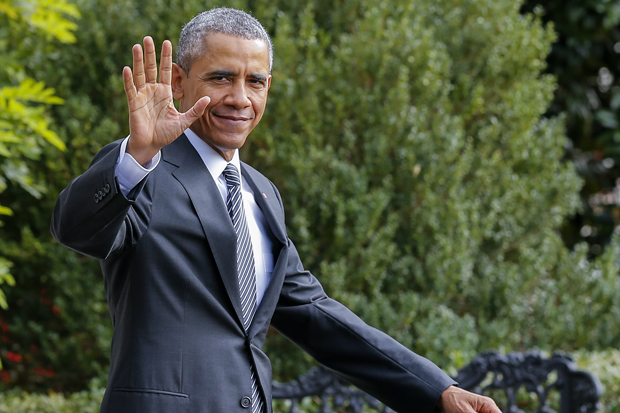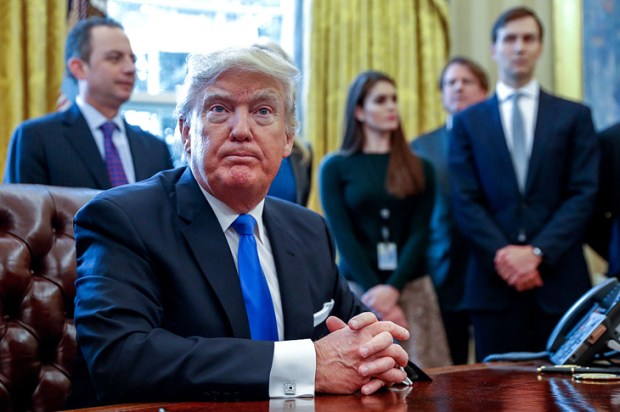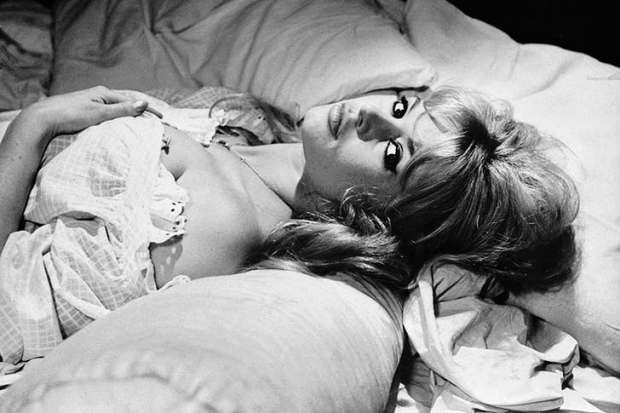The Metropolitan Club in Washington is so close to the White House that President Obama chose to walk there for lunch on Tuesday through Lafayette Park while his motorcade followed behind. The lunch was described in the media as ‘secret’, and American reporters were frustrated by the refusal of the White House and the club’s staff to divulge anything whatsoever about it. But nothing the President does is really secret, and his visit was certainly not secret to me, since I was staying in the club at the time under a reciprocal arrangement between the Metropolitan and the Garrick in London, of which I’m a member.
As I had been warned in advance, security men visited my bedroom with sniffer dogs to check it for explosives; and when I returned from a morning walk, airport-type security was in place at the front door. I had to empty my pockets and be patted up and down, though the man doing the patting showed good manners bordering on deference, which seemed in keeping with the club’s pride in its ‘tradition of social civility’. Alas, I didn’t see Obama. I had a secret lunch of my own to attend. But when I returned from this, there in the front hall of the Metropolitan Club was George Mitchell, the architect of the Good Friday Agreement, who, it subsequently transpired, had been one of the two hosts at the lunch — the other being Tom Daschle, a fellow Democrat and, like Mitchell, a former Senate majority leader.
If I was a little excited about this near-encounter with the leader of the free world, the club took his visit in its stride. It says on its website that it’s one of the city’s ‘most valued private institutions’, one which, more than 150 years after its founding during the American Civil War, ‘continues to attract distinguished members from around the world’, and has been ‘a destination for many local, national and international leaders, including nearly every US president since Abraham Lincoln’. So nothing new about Obama turning up there.
Clubs such as the Metropolitan in America were clearly modelled in the first place on the gentlemen’s clubs of London, but they are generally grander and more opulent. They also seem if anything more traditional, except for the fact that nearly all of them now have women members whereas several London clubs still do not. It was the Garrick’s refusal to admit women that caused the Century Club in New York to withdraw from the reciprocal arrangement by which members of each could enjoy the hospitality of the other. Luckily, the Metropolitan hasn’t followed suit.
During ten days in America, first in New York and then Washington, I have found that ‘social civility’ is not exclusive to the Metropolitan Club but more or less ubiquitous. I am impressed by what good manners most Americans have. This comes as a surprise, especially in New York with its tough reputation. But people are far politer in New York than they are in London. If you ask them the way, they will patiently tell you; and they will smile while they do it. When I couldn’t access the subway with my Metrocard — the equivalent of the Oyster card — a woman simply used hers to let me through and refused a refund. And so it goes on all the time.
There are, of course, crazy people who bellow insults at the sky; there are importunate beggars; and there are doubtless many malevolent characters among the milling crowds. But New York is generally a comforting and reassuring place. It feels as safe as Chipping Norton.
What distinguishes it from everywhere else, however, is the scale and magnificence of its architecture. I went down to Ground Zero for the first time since seeing the devastation after 9/11 and was astonished by what had replaced it. It felt almost unreal, like a sort of fairyland. Condé Nast has now moved with all its magazines into the new and elegant skyscraper that has replaced the twin towers, and the views from the offices of the New Yorker and Vanity Fair across the harbour are simply breathtaking. I don’t know how any work gets done there at all.
Got something to add? Join the discussion and comment below.
Get 10 issues for just $10
Subscribe to The Spectator Australia today for the next 10 magazine issues, plus full online access, for just $10.
You might disagree with half of it, but you’ll enjoy reading all of it. Try your first month for free, then just $2 a week for the remainder of your first year.













Comments
Don't miss out
Join the conversation with other Spectator Australia readers. Subscribe to leave a comment.
SUBSCRIBEAlready a subscriber? Log in